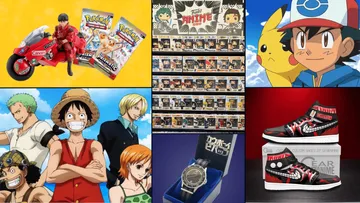The past two years have seen plenty of articles asking the question - has the anime bubble burst? In this post lockdown age are people scaling back on their hobbies? Did anime already peak, at least in countries like the US, UK & France? Both in terms of content and its wider licensing and consumer products opportunities?
Anime first became popular western countries in the 90s, and ever since has had a significant impact on the wider culture. Companies like Funimation, Bandai Entertainment, and 4Kids Entertainment licensed anime in the US and more recently streaming platforms like Crunchyroll, Funimation, Netflix, and Amazon Prime Video have made anime even more accessible to international audiences.
The universal themes and compelling narratives found in amine resonate with audiences wherever they are, and foster a shared appreciation for art, creativity, and imagination.
The influence anime has had on entertainment, fashion, art, and technology is clear to see. The Sailor Moon anime is referenced in the iconic 1998 song "One Week" by the band Bare Naked Ladies. The Pokémon anime surely needs no introduction and remains hugely popular - spanning across not just content, trading cards and video games but licensing and location based experiences. Akira, Evangelion, Ghost in the Shell, and Cowboy Bebop were also big hits in the 90s and early 00s.
Fast forward to 2024 and anime remains hugely popular with ongoing titles like One Piece, Frieren: Beyond Journey’s End, and Bleach: Thousand-Year Blood War, as well as great new titles to watch like Dandadan, Delicious in Dungeon, and Dead Dead Demon’s Dededede Destruction all finding large audiences.
Fans have had plenty to choose from when it comes to finding anime to watch and 2025 will see new and returning hits such as Sunrise and Studio Khara’s Mobile Suit Gundam GQuuuuuuX, the latest mainline series in the long-running Gundam franchise, MAPPA’s Lazarus, Bones’ Gachiakuta, Toei Animation’s One Piece and Science Saru’s Dandadan.
Over the past decade anime has undoubtedly evolved from niche to mainstream, with increased visibility in cinema releases, music streaming, and sports culture. And this crossover is being fan led rather than brand led. The post-pandemic shift in viewing habits has led to much wider mainstream adoption. But with this has come the development of diverse subcultures and micro-communities within the anime fanbase. All of which are crying out for licensed products and experiences but they must be approached with love and authenticity in order to succeed.
Anime still has huge potential for further growth through standalone products and experiences, as well as through collaboration with western brands. Licensees and licensors however must maintain core fan trust while expanding to wider audiences, ensuring not only that all partnerships feel authentic but also through meaningful community engagement.
And with the industry creating their own annual moments at retail, such as Ani-May with limited edition GWPs and products, and Anime Expo in Los Angeles attracting more and more attendees, the future of anime in licensing continues to look bright.
Let us know your thoughts in the comments.
